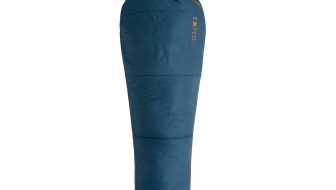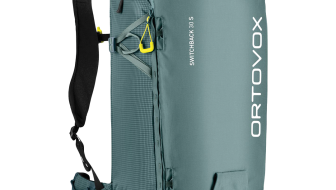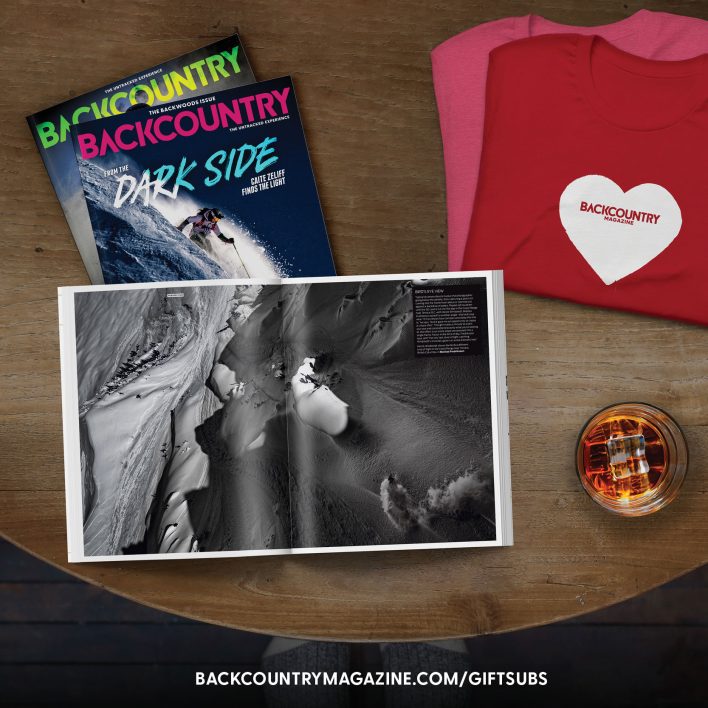The organized chaos that spills across my desk at the time of this writing tells the story of the first-annual Backcountry Beer Test. Empty bottles, bombers and cans in all shapes and sizes look like a New York City skyline, and the stale-beer stench permeates the air. There’s a mosaic of sticky notes across my computer screen and stacks paper with tester comments blanket the remaining desktop surface like snow fall, only broken by piles of brewery stickers. We reached out to more than 50 breweries and tasted more than 70 brews at the first-annual Backcountry Beer Test.
My notebook represents ground zero of the beer test. After compiling a master list of mountain-town craft breweries, I jumped into two straight weeks of researching, e-mailing and calling every brewery on that list. Because of production and bottling limitations some couldn’t participate (and to those who didn’t, we’ll get after you next year). But we ended up with dozens of breweries committed to sending product. Then things go heavy. It wasn’t a flood but a steady trickle of beer arriving at Backcountry’s doorstep from as close as Burlington, Vermont to as far off as Talkeetna, Alaska. One day while bringing beer upstairs I realized I’d hauled some 30 boxes—30 glorious boxes of mysterious craft beer. The final list showed exactly what we had in our possession: 77 different brews representing 27 breweries from 13 states. It was a thing of beauty. After the mystery wore off “phase two” began—planning the event. We love us some beer here at Backcountry, but needed some help, so we brought in some award-winning home brewers, Jeff Schwartz and Mike Barb, who helped to structure the test and bring validity to the comments of the rest of us beer connoisseurs/ski bums. Jeff rooted through the beer, diligently noting all the important characteristics—style, ABV, quantity and home-region. From there, a picture emerged of what we had to work with. Ale was the dominant style, with everything from traditional ales to pale, red, rye, IPA and double IPA. Finally, test day had arrived. We stored the beers in a snowbank on the office porch, like any good drinking town with a skiing problem would. With the work day winding down our motley team of a dozen testers assembled for the task. Again, bringing in experts paid off as they jumped into action categorizing the beers into their respective styles. From there on in, it was all tasting, commenting, scoring and palate cleansing. At one point, somebody proclaimed, “We are averaging 10 minutes per beer. At this rate we won’t finish for another 12 hours!” So we hunkered down and kept tasting, battled through a seemingly endless run of IPAs and wrapping up with the porters and stouts. In the end, about 20 beers came out on top. Read about them all and find out which brews took home Editors’ Choice in the February issue of Backcountry.Current Issue
Listen to the Backcountry Podcast
-

-
DOUG STOUP: THE ICEMAN
From playing NCAA soccer to a successful modeling and acting career to being the top polar explorer of his time, Doug Stoup is an enigma. Host Adam Howard recently journeyed to Antarctica with Stoup and their conversation ranges from Doug’s personal training of A-list Hollywood actors to near death experiences; adventures with Doug Coombs; and taking novice skiers to the South Pole.
Listen Now »
-

-
TELE MIKE RUSSELL: TURNS FOR ALL
Tele Mike Russell grew up as a sharecropper’s son in Delaware before attending college and becoming an executive in the pharmaceutical industry. Then he watched the second plane hit the World Trade Center and decided he’d better follow another path, this one to skiing in Colorado, where he’d go on to find a family in the National Brotherhood of Skiers and help found its backcountry program.
Listen Now »
-

-
ERIC BLEHM: MEET YOUR HEROES
Eric Blehm’s roots in snowboarding run deep. He started riding during the sport’s infancy, and after college became an editor at Transworld SNOWboarding Magazine. Years later, he was in a lift line when a fellow rider saw the “Craig Kelly is my Co-Pilot” sticker on his board, and asked Blehm: “Who is Craig Kelly?” He was floored by the notion that there were snowboarders out there who didn’t know who Craig was. And this inspired him to write The Darkest White.
Listen Now »
Get your 2025 Gear Guide
Subscribe to the Backcountry Newsletter
Gear Reviews

Summer Gear Roundup: Backpacking
Dialing in your camping setup is essential to any backcountry mission. While most of this gear tested by our … [Read More...]

Gearbox: 2025 Packs
Ortovox Switchback 32 Like a good skintrack, our testers agreed the Switchback was easy to use on … [Read More...]



![[Photo] Kalin Bucholz](http://backcountrymagazine.com/wordpress/wp-content/uploads/2013/05/beer2.jpg)
![[Photo] Kalin Bucholz](http://backcountrymagazine.com/wordpress/wp-content/uploads/2013/05/beer3.jpg)

![[Photo] Kalin Bucholz](http://backcountrymagazine.com/wordpress/wp-content/uploads/2013/05/beer5.jpg)
![[Photo] Kalin Bucholz](http://backcountrymagazine.com/wordpress/wp-content/uploads/2013/05/beer6.jpg)




Related posts:
2015 Beer Test: Editors' Choice
2015 Beer Test: Parking Lot/Après
2015 Beer Test: Skintrack Suds
2015 Beer Test: Hut to Hut